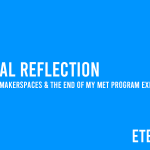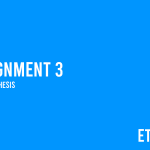Reflection
I absolutely love the art of web design. From a young age, I was always fascinated with technology and began developing websites when I was around 14 years old. I started off small and designed a few sites for a family members’ businesses and eventually began offering my web design services to other friends. In my opinion, the most exciting part of creating a website is the design aspect. It is always a challenge to come up with new innovative ideas that give a website the “pop” it needs to stand out from competitors. I am in the middle of redesigning the website for the elementary school I currently work at, as well as two other websites, so UI has been on my mind lately.
Doing this exercise was a lot of fun and I found a lot of humour in it. The simple design choices (or non-choices) really made this a puzzling activity. As we continue to use technology, and specifically the internet, we have been trained to click without thinking. We rarely read the text on buttons and instead look for different shades and contrast on the pages to know where to click. We always look for different colours of text to either know emphasis or a link, we look for large buttons that either stand out from the page or are green/red to know if we want to submit something, and we always “check” the box for terms and conditions without even reading. The internet has trained our minds to do these things and it has become such a norm that if any of these UI choices are not made, the usability and accessibility of a website is in jeopardy.
User Inyerface is clearly doing an excellent job of showcasing dark patterns and our own faults in relation to not reading and just clicking (Brignull, 2011). An immediate example that I thought of in relation to checkboxes involved the always “shady” installation processes of certain programs. These installers try to add bloatware programs to the computer in the exact same manipulative ways that are explained as dark patterns. Either the box is already checked to install the bloatware when you are going through the installation process (and you only happen to realize after you click next and the program magically installs instantly), or the “next” button automatically accepts the install and users miss the super tiny text link that would negate the install.
I believe that we will be stuck with these dark patterns forever and we should actually be teaching our youth about them during ADST classes. In a way, they’re just as bad as phishing scams as the level of deception can be seen as equivalent. Although from a UI perspective these dark patterns seem innocent, they can be used in a malicious way to have malware installed on a system or to accidentally give away personal information to third parties. This was a fun exercise and I enjoyed comparing my score on User Inyerface with a few of my friends who are in the field of UI design (they all beat my score).
Reference
Brignull, H. (2011). Dark Patterns: Deception vs. Honesty in UI Design. Interaction Design, Usability, 338.







